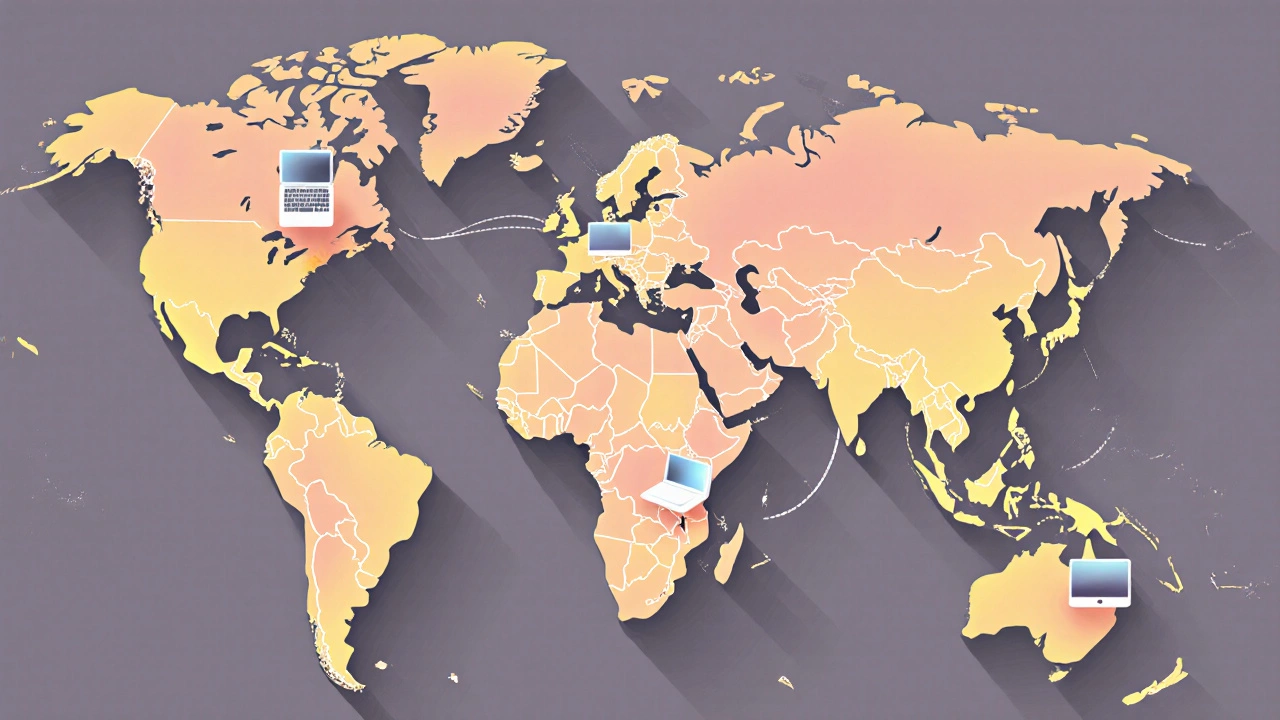When you hear the term Electronics is any device that uses electric power to process, store, or transmit information, like smartphones, TVs, or laptops, you probably think of high‑tech gadgets that cost a fortune. The truth is the price tag is shaped by where the device is made, the wages paid to the workers, and the taxes that cross borders. If you’re hunting for the cheapest electronics, understanding these factors can save you a lot of cash.
Quick Takeaways
- India and Vietnam now offer the best price‑to‑performance mix for smartphones and basic laptops.
- China remains the cheapest source for high‑volume items like TV panels and accessories.
- Mexico gives North‑American buyers a low‑tariff advantage on mid‑range devices.
- Look beyond the sticker price - labor costs, import duties, and currency rates matter.
- Buying directly from local brands or authorized distributors reduces hidden fees.
Why Prices Vary Across Borders
Three big forces pull the price of a gadget up or down:
- Labor cost - Countries with lower average wages can produce the same circuit board for less money.
- Taxes and duties - Import tariffs, value‑added tax (VAT), and corporate tax rates change the final cost.
- Currency strength - A weak local currency makes exports cheaper for overseas buyers.
Supply‑chain efficiency also plays a role. A factory that sits next to a major port saves on shipping, which in turn keeps the retail price low.
India: The Rising Star
India is the world’s second‑largest electronics manufacturer after China, with a strong focus on mobile phones and low‑cost laptops. The government’s "Make in India" push has attracted big players like Samsung and Xiaomi to set up local assembly lines. Average manufacturing wages sit around $450 per month, roughly half the cost in China. That translates to about a 10‑15% price advantage for smartphones made in Indian factories.
China: The Still‑Dominant Low‑Cost Hub
China is the world’s biggest exporter of consumer electronics, known for massive scale and advanced automation. Even with rising labor costs (about $950 per month on average), economies of scale keep prices low for high‑volume items like LED TV panels, earbuds, and chargers. However, U.S. and EU tariffs on certain Chinese goods can add 10‑25% to the final price.
Vietnam: The Agile Competitor
Vietnam is a fast‑growing electronics manufacturing destination, especially for smartphones and wearables. Labor costs average $380 per month, even lower than India’s. The country benefits from multiple free‑trade agreements, meaning many products face low or zero tariffs when shipped to the EU, Japan, and the U.S. This makes Vietnam‑made phones some of the cheapest on the market.

Mexico: The North‑American Advantage
Mexico is a key supplier for the U.S. electronics market, offering lower tariffs under USMCA and proximity to major ports. Average wages for assembly workers are about $600 per month. While labor isn’t the cheapest, the reduced shipping time and duty‑free access give Mexican‑made tablets and mid‑range laptops a price edge for U.S. shoppers.
South Korea, Brazil, and Indonesia: Niche Players
South Korea excels in premium components but offers limited low‑cost options. Brazil’s high taxes keep prices up, despite a growing local manufacturing base. Indonesia is emerging with affordable smartphones, but supply‑chain bottlenecks still raise costs.
Price Comparison Table
| Country | Avg. Labor Cost (USD/month) | Key Export Products | Typical Tariff to US/EU (%) | Price Index vs. US Avg. |
|---|---|---|---|---|
| India | 450 | Smartphones, Low‑cost laptops | 0‑5 | 0.85 |
| China | 950 | TV panels, Accessories, Mid‑range phones | 10‑25 (US), 5‑15 (EU) | 0.88 |
| Vietnam | 380 | Smartphones, Wearables | 0‑3 (EU), 0‑5 (US) | 0.80 |
| Mexico | 600 | Tablets, Mid‑range laptops | 0 (USMCA) | 0.87 |
| South Korea | 1,200 | Premium displays, Memory chips | 0‑5 | 0.95 |
How to Hunt for the Cheapest Electronics
- Buy from local brands that source parts from the low‑cost countries listed above. Brands like Realme (India), Xiaomi (Vietnam), and Micromax (India) often launch models that are cheaper than imported equivalents.
- Check duty‑free zones. Many airports and border cities have stores that sell electronics without the usual import tax.
- Use price‑comparison tools that factor in shipping and duties. Websites that show a “total landed cost” give a clearer picture than the sticker price alone.
- Consider refurbished units. Refurbished phones from Indian or Vietnamese factories can be up to 30% cheaper while still carrying a warranty.
- Watch currency trends. A stronger dollar makes overseas goods cheaper; a weaker euro does the opposite.

Common Pitfalls and How to Avoid Them
Low price doesn’t always mean good value. Here’s what to watch out for:
- Short warranty periods - Some manufacturers only offer a 3‑month warranty for export models. Verify the terms before buying.
- Missing certifications - Look for CE, FCC, or RoHS marks. Without them, you might face safety issues or trouble reselling.
- Hidden shipping fees - Express shipping can add 20‑30% to the cost. Calculate total landed cost first.
- Poor after‑sales support - Local service centers are rare for devices made in Vietnam or Indonesia. Choose brands that have a service network in your country.
Real‑World Scenarios
Smartphone example: A 6.5‑inch Android phone costs $250 in the U.S. The same model, assembled in India, retails for $210 after a 5% import duty. Add $15 shipping and you’re still $25 cheaper.
LED TV example: A 55‑inch TV made in China is $400 in the U.S. after a 15% tariff. A similar TV assembled in Vietnam faces a 5% duty, bringing the price down to $350.
Laptop example: Mid‑range laptops built in Mexico ship duty‑free to the U.S., saving roughly $30 compared to a Chinese‑made counterpart with a 10% tariff.
Future Trends
By 2027, the Indian government plans to subsidize semiconductor fabs, which could push micro‑chip prices down and make Indian‑made smartphones even cheaper. Vietnam’s participation in the Regional Comprehensive Economic Partnership (RCEP) will also lower cross‑border costs for EU buyers.
Frequently Asked Questions
Which country currently offers the lowest average price for smartphones?
Vietnam leads the pack for budget smartphones. Average labor costs are low, and free‑trade agreements keep tariffs minimal, resulting in price indexes around 0.80 compared to the U.S. market.
Do lower labor costs always mean cheaper electronics for the consumer?
Not always. High tariffs, shipping distances, and lack of local certification can add enough cost to offset cheap labor. That’s why a full landed‑cost calculation matters.
Is it safe to buy refurbished devices from India or Vietnam?
Yes, as long as the refurbisher offers a warranty and the device carries the usual safety certifications. Check seller reviews and return policies before purchasing.
How do exchange rates affect the price of imported electronics?
A stronger local currency makes foreign‑made goods cheaper, while a weaker currency raises the landed cost. Monitoring forex trends can help you time purchases for better deals.
Will the "Make in India" initiative lower prices for high‑end gadgets?
In the short term, it mainly benefits mid‑range and budget devices. High‑end gadgets still rely on advanced component imports, so price cuts will be gradual.






